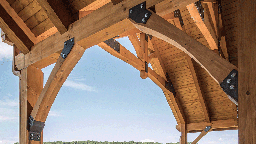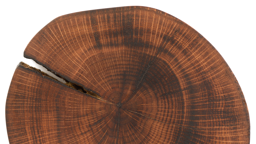
It’s a concept that blends seamlessly with eco-friendly home building: Whenever possible, use materials that have been reused, reclaimed or recycled, and you’ll add instant value and unique charm to your home.
Not to mention, the resources you’ll be saving by choosing vintage options instead of brand new materials. But here’s the question: How do you actually build a home from reclaimed timber? Should you go it alone, piecing together items from different businesses that specialize in recovered floors, siding, timbers — you name it? Or should you work with one company that offers all of your reclaimed materials under one roof?
Depending on what items you’re looking for and the extent that you want to incorporate these materials into your home, the answer depends. Finding reclaimed materials takes some creativity and planning ahead, but there are options. The most obvious, and perhaps easiest, method is to hire a company in the field, but if you want to get your hands dirty, there are some things you can do yourself.
Common sources for items like reclaimed timber range from agrarian buildings to old factories, so attending farm auctions might be a good idea. If you are interested in taking the initiative in your material search, researching real estate and old buildings is another easy option. Only you will know exactly what reclaimed items you want for your home, and doing the legwork yourself is a good way to achieve the desired outcome.
On the other hand, a reputable company could get you the same results without having to do all of the heavy lifting on your own. Jennifer Young of New Energy Works, a timber-frame company that works with reclaimed timbers, recommends using a company as opposed to finding the materials on your own. “We’ll likely have the material, and if not, we have the know-how to find it, then negotiate the best value for it and pass that savings on to our customer,” says Young.
Another added benefit of going through a reclaimed expert: They can help you decide how and where to incorporate the materials into your design. Because the majority of homeowners are not also reclaimed experts, such companies can make the distinctions between usable and defective items.
Long-Term Benefits
In addition to keeping these one-of-a-kind materials out of landfills, using reclaimed products in your home will provide other added benefits, such as: Durability. Compared to new products, reclaimed items (particularly old-growth wood) are much stronger and will last longer in your home. According to Jamie Heipel, executive director of The Green Institute in Minneapolis, “old wood, just based on growth life and tightness of grain, is much more durable than fresh wood from the big-box stores.” Old wood has also settled and shrunk into a more permanent form, creating less of a hassle down the road.
Low-Maintenance Qualities.
Many reclaimed items will require less maintenance simply because they’ve already become worn over time, creating a storied look that’s become increasingly popular in recent years. “Our products have already been weathered, so there’s not much that can stain them, dent them or wreck them at this point,” explains Zac Guy, owner of Appalachian Antique Hardwoods in Waynesville, North Carolina. This is particularly true for materials like floorboards, siding and timbers. Sense of History.
While people like the idea of making eco-friendly decisions during their build, they also like the added character and sense of nostalgia that’s achieved through the use of reclaimed products. “I look at it like an ‘old soul’ type of approach,” says Jeffery Caudill, founder and President of Winterwoods Homes in Nellysford, Virginia. “I think these materials make people feel like they’re going back in time. It’s that feeling that is drawing more and more people to these products.”
Salvage Sites
Want to incorporate salvaged, reclaimed, recycled and sustainable materials into your home? These sites are a smart place to start. ecobusinesslinks.com This site compiles more than 13,000 links to outlets selling recycled, reclaimed and sustainable goods. For an exhaustive directory of building-materials companies, start on the Home (Directory) page and scroll down to EcoHouses, Architecture & Green Building Supplies, then to Recycled & Surplus Building Supplies. There you’ll find a thorough directory of outlets and links in 11 categories, among them green building supplies, recycled building materials, reclaimed wood and recycled metal roofing. habitat.org Habitat for Humanity’s ReStore outlets sell new and used home-improvement goods like furniture, home accessories, building materials and appliances.
ReStore resale outlets accept donated goods, which are then sold to the general public at a fraction of their retail price. The proceeds help local nonprofit Habitat for Humanity affiliates fund the construction of homes within their communities. The web site explains the organization’s mission and provides a comprehensive state-by-state directory. planetreuse.com Whether you’re looking to purchase reclaimed home materials or have your own stash to sell, PlanetReuse can help. The home page features recently listed items or you can take a look at the complete database of listings under the new online “Marketplace” tab. The site also offers virtual design consulting, as well as a look at projects (both commercial and residential) that have incorporated reclaimed materials in the design.









_11868_2023-06-30_11-50-256x288.jpg)

